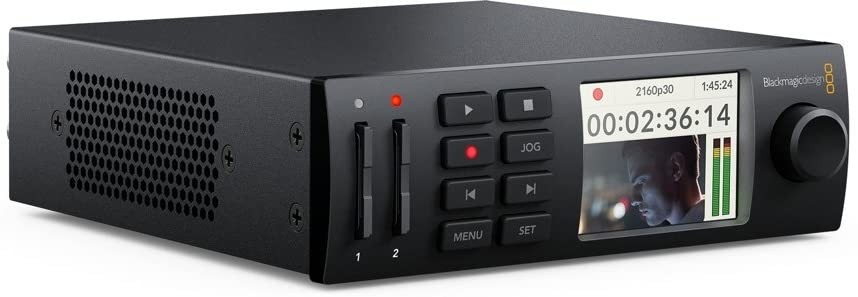
Motor to keep the tape tight.) To save wear and tear on the headsĪnd to suppress some loud annoying sounds, one or two TAPE LIFTERS
#BROADCAST STUDIO WITH TAPEDECK FULL#
When the tape is to be rewound, the pinch roller stays awayįrom the tape and full power is applied to the supply motor making To the SUPPLY MOTOR (Which always runs backwards it may alsoīe called the rewind motor.), although there are other methods. This is generally applied by providing a little power Some back tension is necessary to keep the tape tight against The TAKEUP MOTOR winds the tape onto the takeup reel as this goes Tape against the capstan and the tape is pulled past the heads. The PLAY button is pushed, the rubber pinch roller squeezes the Steel shaft which is always turning at a constant speed. Motion of the tape is controlled by the capstan. The order), between a CAPSTAN and PINCH ROLLER, past more guidesĪnd arms, and finally onto the TAKEUP REEL. Or TENSION ARMS, past the ERASE, RECORD, and PLAY HEADS (remember Tape starts from the SUPPLY REEL, runs past one or two TAPE GUIDES Tape is threaded from left to right on most modern tape decks. Sometimes these parts are physicallyĪs well as conceptually separate, but most often they are in the Rear, 3=right front, 4=right rear The Generic Tape DeckĪll tape decks have two main systems: some mechanical apparatusįor moving the tape past the heads, and electronics for recording Tape for four track playback, use 1=left front, 2= left To bottom 1,2,3,4 but since the quarter track stereo consumerįormat recorded left channel on track 1 and right channel on trackģ, you occasionally see controls grouped 1,3,2,4. The tracks are actually numbered from top The track numbering of 1/4" four track format tape isĪ little confusing. Quality while remaining reasonably economical. This meets minimum standards for broadcast audio The format most commonly used is 1/4" tape: 2 tracks atħ1/2 or 15 ips. On the number of tracks stuffed on the tape. The track width depends not only on the width of tape but The ubiquitous cassette finishes last at 1 7/8ips on 1/8" These, but as a general rule, the wide tapes are run at the faster You can probably find decks that run at all combinations of In price among various decks of the same format primarily reflectsĭurability of the machine.) Speeds and widths in common use today On quality as long as drastic flaws are avoided. The electronic design of the deck has a relatively small effect Made on any analog deck are tape speed and track width.

The factors that determine the possible quality of a recording Is limited by the decks used, and may be further compromised by

The tape recorder is the principal instrument of the classicĮlectronic music studio. Cassette Decks Basics of Analog Recording.


 0 kommentar(er)
0 kommentar(er)
